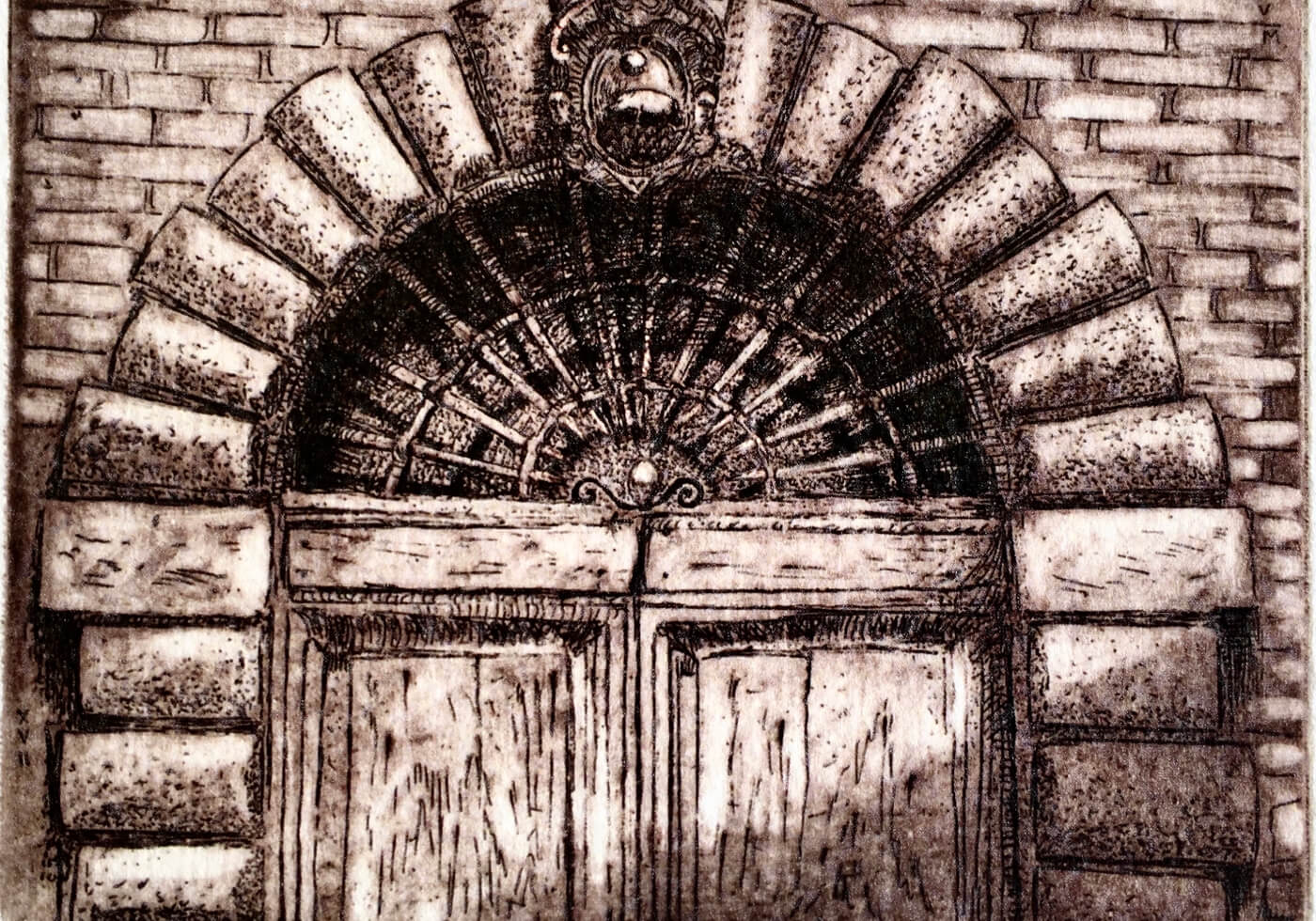Faviani Palace: probably the oldest still existing palace of the entire village of Massignano: the portal would in fact go back to its construction around the fifteenth century.
The enigmatic inscription above the terracotta arch, finely decorated and probably built later than the main architrave, has not yet been well deciphered.
Very impressive, leaving the portal on the left and continuing along the way, the glimpse that opens on the Sibillini mountains nestled between the two high rows of buildings that degrade slightly downhill towards the belvedere Tassoni.
Santini Palace: the date of construction of the palace dates back to the mid-eighteenth century (1745) by the Santini family, belonging to the local aristocracy of that time and owner of many lands.
The accurate construction and color in terracotta of this building denotes the presence, in the local reality, of highly qualified workers both in terms of design and direction of the works and construction.
Note in particular the seven masks between volutes, leaves and terracotta rosettes placed above the windows of the main floor, and a vase between two stylized peacocks at the base of each window.
The building remained the property of the Santini family until 1920, when it was bought by the province of Ascoli Piceno and used as a Caserma dei Carabinieri, a function that it maintained until 1962 and then became a municipal property in 1973.
Palazzo Tassoni: Renaissance style, was built in the sixteenth century and inhabited until the 60s of the last century by the descendants of the homonymous family Tassoni, from Modena and Ferrara, moved to the Marche at the beginning of the sixteenth century and settled first in Ripatransone, then in Massignano then in Fermo.
Among its most illustrious members were the jurisconsult and auditor of Rota Alessandro Maria, the physician Giambattista and, during the Second World War, the podestà Adolfo.
Palazzo Ricci (formerly Teodori): the building, which belonged until the second half of the 20th century to the aristocratic and landowner Teodori di Massignano family, and built in the second half of the 18th century, has three decorative building elements of particular interest: two symmetrical entrances surmounted by two round Ascoli travertine skylights;
the central facade of the lower floor in a beautiful ashlar of terracotta shaded in warm colors;
two decorations in bas-relief of a vegetable character depicting plaster greenhouses above the two central windows of the upper floor.
Laurantoni Palace: it is the birthplace of the Risorgimento hero Nicola Laurantoni. Born in 1796 and enrolled as a young man in the Carboneria, he was expelled from high school at the seminary of Fermo and headed the “sale” (secret group) massignanese during the first riots of 1820-’21 for the Unification of Italy.
In 1831 he was recruited by the volunteer troops of General Sercognani and immediately became captain of company. Settled in Macerata on his return from the failed expedition rejected by the Austrian troops, and followed by the papal gendarmerie, he returned to Massignano under the threat of imprisonment.
In 1848, although disappointed by the fate of the First War of Independence (effectively ended by the armistice Salasco), he took part in the experience of the Roman Republic led by Mazzini, Armellini and Saffi, which led to the flight of Pope Pius IX to Gaeta and the elections for the Constituent Assembly in January 1849, during which he was elected deputy representative of the college of Ripatransone.
In June of the same year he fought against the French who came to the defense of the Pope and was seriously wounded (simultaneously with the killing of Geoffrey Mameli). He died a month later, on July 4, from his injuries.
Ranocchi Palace (formerly Acciarri and Laurantoni): The construction of the palace dates back to the second half of the 17th century, placed on the foundations of pre-existing structures mostly belonging to the ancient Castle of Massignano. The main part of the building was designed with a unitary project, trying to give the palace regularity; the elegance and proportion of its compositional lines is remarkable. From one of its ‘wings’ you access the historic center of Massignano through the underlying west gate of the village created later.
Noteworthy are the frescoed rooms and the main staircase of considerable size supported by columns in Tuscan order, the result of some modifications made in the 18th century. The palace was internally renovated and modified several times, most recently at the end of the 19th century. Having belonged to various families, in the 18th and 19th centuries it belonged to the Laurantoni family, a local noble family. It was purchased from the Laurantoni by Policarpo Acciarri at the turn of the 20th century.
From the Acciarri it passes to the Ranocchi family, the current owners. The palace is the headquarters of the Fondazione Opera Augusto Ranocchi.














